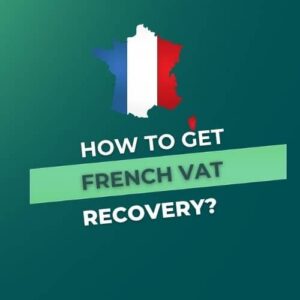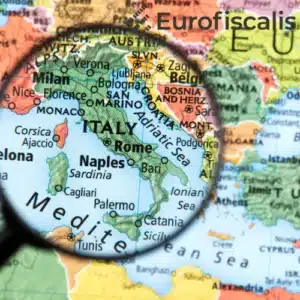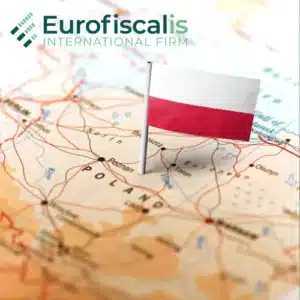Norwegian VAT refund
In Norway, a VAT refund is the process of getting VAT refunded on purchases that have happened in Norway, while one is not obliged to be VAT registered in Norway. Normally, input VAT, paid on purchases, is refunded through the normal VAT declaration. For non-VAT registered companies, this VAT refund works differently.
- Published:
- Comments
What are the requirements in order to get a VAT refund in Norway?
There are a few requirements if you want to get a vat refund in Norway. These are:
- Not Being registered for VAT in Norway: To be eligible for a VAT refund, a foreign company must not be obliged to register for VAT in Norway and must have a valid VAT number. The business can’t have had any VAT-liable turnover during the past 12 months in Norway. This means that you have not sold any goods or services in Norway. If you have sold any goods or services in Norway surpassing 50.000 , this would require VAT registration in Norway. See our other articles on this.
- Having paid VAT on purchases: To request a VAT refund, a foreign company must have paid VAT on its purchases in Norway. This means that the company must have paid VAT on goods or services that it has purchased from suppliers in Norway.
- The goods or services that you are requesting a VAT refund for have been for use within your enterprise. Goods or services that you buy for a profit and then sell to private individuals are not entitled to a refund.
- The business turnover would have entailed a registration had the registration occurred inside of Norway.
- The VAT would have been deductible had your business been registered in Norway. The vat should also be refundable for Norwegian companies. Fe. Vat on food is never refundable for Norwegian companies, and hence cannot also not be refunded under this scheme.
How to apply for a VAT refund for non-registered company?
Applying for the refund itself involves a few steps, including:
- Gather the necessary information and documentation: To apply for a VAT refund, you will need to gather information about your business, including your VAT number in your home country and contact information. You will also need to gather supporting documentation, such as invoices or receipts, to verify your request for a VAT refund.
- Download or request the VAT refund form (MVA-refusjon) (RF-1032): You can download the VAT refund form from the Norwegian Tax Administration (Skatteetaten) website or request a form by contacting the tax authorities directly. There is some information that is required in order to send in the form. The following information should be included
- Invoices: You must enclose copies of invoices/accounting vouchers and any export documents with the application. These will not be returned invoices after processing unless the applicant specifically asks for that.
- Certificate from a public authority in the applicant’s home country: You must submit a copy of the certificate confirming that during the application period, you have carried on the type of commercial activity that is stated in box 3 of the application form. The certificate must be valid for one year after the date of issue. We can send you examples of approved certificates from different countries upon request. State the country you would like an example from.
- Power of Attorney: You must submit an original letter of attorney if you are applying for a refund through an agent (not to be confused with the enterprise’s contact person). The certificate and the letter of attorney must be in Norwegian, Swedish, Danish or English. If they were issued in a different language, you must enclose a certified translation.
- Complete the VAT refund form: When completing the VAT refund form, you will need to provide information about your business, including your VAT number and contact information, and specify the total amount of VAT that you are requesting a refund for and the reason for the refund. You will also need to attach supporting documentation (i.e. the invoices) to the form.
- Submit the VAT refund form: Once you have completed the VAT refund form and gathered the necessary documentation, you can submit the form to the Norwegian Tax Administration (Skatteetaten). This can typically be done online or by mailing the form to the tax authorities.
Once you have submitted the form comes a waiting period of around six months. It is important to note that the form must be filled out correctly. The application deadline for the previous calendar year is 30 September.
This means that the application must be postmarked no later than this date.
This is an activity that businesses can do themself. At Eurfosicallise specialise in helping businesses on the topic of indirect taxation.
Norwegian VAT refund for EU-based companies
VAT refunds in Norway are available to enterprises based in EU member states as well as non-EU corporations. The VAT Refund Directive of the EU governs the procedure for companies based in the EU and streamlines the claim procedure for international companies doing business in the EU.
Refund processing time
It may take up to four to six months to complete VAT refund claims after they are submitted. The application is examined and the supporting evidence is confirmed by Norway’s tax authorities. The refund is given, usually by bank transfer, if the claim is accepted.
What to do if your VAT refund is denied?
Businesses can appeal if their application for a VAT refund is rejected. It’s crucial to check the reason for the rejection, confirm that all essential paperwork was submitted, and make the relevant adjustments if a refund request is denied. Seeking assistance from legal or VAT specialists can aid in the effective resolution of these problems.
In Eurfosicalis, we specialise in helping businesses with their different needs for indirect taxation. We support European companies in their expansion.

Get French VAT recovery ?
How to get French VAT recovery ? In France, like in most countries, Value Added Tax (VAT) should not be a final cost for your

VAT returns in Italy: Learn about Italian rules
Navigating the Italian VAT system can be complex. Are you clear on the difference between periodic (LIPE) and annual VAT returns in Italy? Don’t risk costly penalties for late or incorrect VAT declarations. Our comprehensive guide breaks down the entire process, from understanding taxable transactions and VAT rates to meeting crucial deadlines and claiming refunds

VAT returns in Poland: requirements and deadlines
Struggling with Polish VAT returns? This guide breaks down how to file the mandatory JPK_V7, meet deadlines, and successfully claim your VAT refund. Get clear on the requirements and ensure you get your money back.
